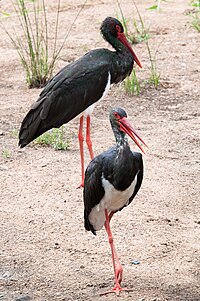
Photo from wikipedia
In the Mediterranean region, the effects of climate change on tree growth have been more and more noticeable in recent decades. Pinus nigra is one of the most common mid-elevation… Click to show full abstract
In the Mediterranean region, the effects of climate change on tree growth have been more and more noticeable in recent decades. Pinus nigra is one of the most common mid-elevation pine in this region and one of the species most affected by increasing dryness. In Tunisia, in order to guide species selection for future reforestation of the Khroumirie Mountains, research studies are under way to improve knowledge of black pine ecology. The effects of interannual climate variations on radial growth were compared for 19 provenances of black pine in a 51-year-old common garden experiment in Souiniet (NW Tunisia, 492m) in a humid Mediterranean bioclimate. A significant positive correlation with April precipitation and a significant negative correlation with spring temperature were noted. A cool wet spring is beneficial to growth as it affects tree water balance at the onset of the growing season; in contrast, spring drought is responsible for low annual growth. Mild January–February temperatures have a positive influence on ring width as mild winters may foster photosynthesis and promote early resumption of cambial activity. Analysis of the pointer years showed that winter snow and hail are major factors limiting growth of black pine in the studied area. Despite overall similarities in ring width to climate relationships among provenances, differences observed attest to the interaction of the environment and genetic control of black pine diameter growth.
Journal Title: Dendrochronologia
Year Published: 2018
Link to full text (if available)
Share on Social Media: Sign Up to like & get
recommendations!